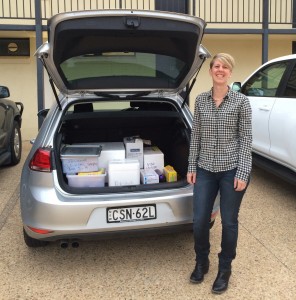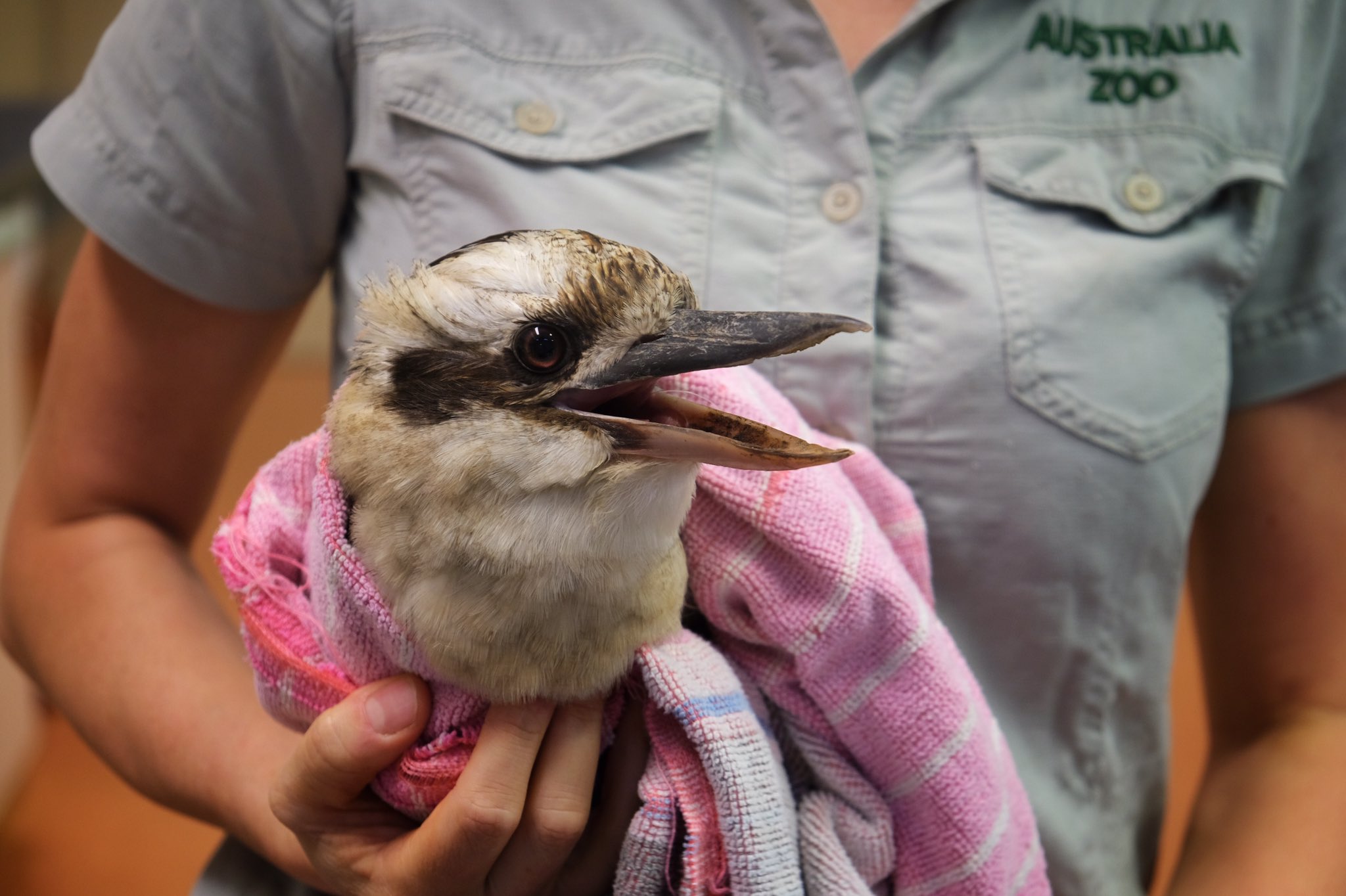 Feline panleukopenia virus has re-emerged and claimed the lives of around 200 cats in three outbreaks in Australia.
The virus, rarely seen in cats, was responsible for a Melbourne outbreak in 2013, affecting around 60 cats. A second Melbourne outbreak, involving 60-70 cats, occurred in February this year with a third outbreak hitting cats in Mildura, Victoria, in April this year.
“In all outbreaks affected cats were mostly kittens from shelters with no history of feline panleukopenia (FPV) vaccination,” Sydney University investigator Vanessa Barrs said.
Unvaccinated kittens are most susceptible to FPV infection when maternal antibodies wane. In the Mildura outbreak, most affected kittens were in the six to 14 week age bracket although a one-year-old cat developed clinical signs. In the 2015 Melbourne outbreak some older kittens (five to six months) and adult cats with lapsed vaccines were affected.
“We are looking at the epidemiological features of the disease, since there have been movements of cats between shelters and adoption centres in Mildura and Melbourne,” Barrs said.
FPV typically causes acute disease characterised by high fever, profound lethargy, anorexia, vomiting and diarrhoea which may be haemorrhagic. Death is due to severe dehydration, septicaemia and disseminated intravascular coagulation (DIC). Per-acute disease results in sudden death with no premonitory signs.
“Owners have been known to state ‘the cat was OK last night and died this morning’,” Barrs said.
Infected queens may abort or produce kittens with ocular and central nervous system defects including cerebellar hypoplasia.
Diagnosis requires an index of suspicion which practitioners may not have due to the fact that FPV has been so rare. In-house faecal antigen ELISA test kits for canine parvovirus will detect FPV in cats in 50-80 per cent of cases. False positives can occur in cats vaccinated with a modified live-vaccine. Up to 65 per cent of affected cats have leukopenia and 55 per cent have thromobocytopenia. Diagnosis can be confirmed using PCR.
Barrs has joined Ian Japp from Mildura Veterinary Clinic, Edward Holmes from Sydney University, Andrew Allison from Cornell University’s Baker Institute, Mark Kelman from Virbac’s Disease Watchdog, Joanne Meers from Queensland University, and Julia Beatty from the Valentine Charlton Cat Centre to investigate the outbreaks.
“We are extending the study to see whether Aussie cats are shedding canine parvoviruses, and if they are, we will compare the viruses they are shedding with the CPVs from dogs with clinical disease,” Barrs said.
Barrs and colleagues are seeking faecal samples from cats and dogs with suspected CPV infection on the basis of a positive ELISA or PCR test. For further information email vanessa.barrs@sydney.edu.au.
ANNE FAWCETT
Feline panleukopenia virus has re-emerged and claimed the lives of around 200 cats in three outbreaks in Australia.
The virus, rarely seen in cats, was responsible for a Melbourne outbreak in 2013, affecting around 60 cats. A second Melbourne outbreak, involving 60-70 cats, occurred in February this year with a third outbreak hitting cats in Mildura, Victoria, in April this year.
“In all outbreaks affected cats were mostly kittens from shelters with no history of feline panleukopenia (FPV) vaccination,” Sydney University investigator Vanessa Barrs said.
Unvaccinated kittens are most susceptible to FPV infection when maternal antibodies wane. In the Mildura outbreak, most affected kittens were in the six to 14 week age bracket although a one-year-old cat developed clinical signs. In the 2015 Melbourne outbreak some older kittens (five to six months) and adult cats with lapsed vaccines were affected.
“We are looking at the epidemiological features of the disease, since there have been movements of cats between shelters and adoption centres in Mildura and Melbourne,” Barrs said.
FPV typically causes acute disease characterised by high fever, profound lethargy, anorexia, vomiting and diarrhoea which may be haemorrhagic. Death is due to severe dehydration, septicaemia and disseminated intravascular coagulation (DIC). Per-acute disease results in sudden death with no premonitory signs.
“Owners have been known to state ‘the cat was OK last night and died this morning’,” Barrs said.
Infected queens may abort or produce kittens with ocular and central nervous system defects including cerebellar hypoplasia.
Diagnosis requires an index of suspicion which practitioners may not have due to the fact that FPV has been so rare. In-house faecal antigen ELISA test kits for canine parvovirus will detect FPV in cats in 50-80 per cent of cases. False positives can occur in cats vaccinated with a modified live-vaccine. Up to 65 per cent of affected cats have leukopenia and 55 per cent have thromobocytopenia. Diagnosis can be confirmed using PCR.
Barrs has joined Ian Japp from Mildura Veterinary Clinic, Edward Holmes from Sydney University, Andrew Allison from Cornell University’s Baker Institute, Mark Kelman from Virbac’s Disease Watchdog, Joanne Meers from Queensland University, and Julia Beatty from the Valentine Charlton Cat Centre to investigate the outbreaks.
“We are extending the study to see whether Aussie cats are shedding canine parvoviruses, and if they are, we will compare the viruses they are shedding with the CPVs from dogs with clinical disease,” Barrs said.
Barrs and colleagues are seeking faecal samples from cats and dogs with suspected CPV infection on the basis of a positive ELISA or PCR test. For further information email vanessa.barrs@sydney.edu.au.
ANNE FAWCETT Return of a feline foe
 Feline panleukopenia virus has re-emerged and claimed the lives of around 200 cats in three outbreaks in Australia.
The virus, rarely seen in cats, was responsible for a Melbourne outbreak in 2013, affecting around 60 cats. A second Melbourne outbreak, involving 60-70 cats, occurred in February this year with a third outbreak hitting cats in Mildura, Victoria, in April this year.
“In all outbreaks affected cats were mostly kittens from shelters with no history of feline panleukopenia (FPV) vaccination,” Sydney University investigator Vanessa Barrs said.
Unvaccinated kittens are most susceptible to FPV infection when maternal antibodies wane. In the Mildura outbreak, most affected kittens were in the six to 14 week age bracket although a one-year-old cat developed clinical signs. In the 2015 Melbourne outbreak some older kittens (five to six months) and adult cats with lapsed vaccines were affected.
“We are looking at the epidemiological features of the disease, since there have been movements of cats between shelters and adoption centres in Mildura and Melbourne,” Barrs said.
FPV typically causes acute disease characterised by high fever, profound lethargy, anorexia, vomiting and diarrhoea which may be haemorrhagic. Death is due to severe dehydration, septicaemia and disseminated intravascular coagulation (DIC). Per-acute disease results in sudden death with no premonitory signs.
“Owners have been known to state ‘the cat was OK last night and died this morning’,” Barrs said.
Infected queens may abort or produce kittens with ocular and central nervous system defects including cerebellar hypoplasia.
Diagnosis requires an index of suspicion which practitioners may not have due to the fact that FPV has been so rare. In-house faecal antigen ELISA test kits for canine parvovirus will detect FPV in cats in 50-80 per cent of cases. False positives can occur in cats vaccinated with a modified live-vaccine. Up to 65 per cent of affected cats have leukopenia and 55 per cent have thromobocytopenia. Diagnosis can be confirmed using PCR.
Barrs has joined Ian Japp from Mildura Veterinary Clinic, Edward Holmes from Sydney University, Andrew Allison from Cornell University’s Baker Institute, Mark Kelman from Virbac’s Disease Watchdog, Joanne Meers from Queensland University, and Julia Beatty from the Valentine Charlton Cat Centre to investigate the outbreaks.
“We are extending the study to see whether Aussie cats are shedding canine parvoviruses, and if they are, we will compare the viruses they are shedding with the CPVs from dogs with clinical disease,” Barrs said.
Barrs and colleagues are seeking faecal samples from cats and dogs with suspected CPV infection on the basis of a positive ELISA or PCR test. For further information email vanessa.barrs@sydney.edu.au.
ANNE FAWCETT
Feline panleukopenia virus has re-emerged and claimed the lives of around 200 cats in three outbreaks in Australia.
The virus, rarely seen in cats, was responsible for a Melbourne outbreak in 2013, affecting around 60 cats. A second Melbourne outbreak, involving 60-70 cats, occurred in February this year with a third outbreak hitting cats in Mildura, Victoria, in April this year.
“In all outbreaks affected cats were mostly kittens from shelters with no history of feline panleukopenia (FPV) vaccination,” Sydney University investigator Vanessa Barrs said.
Unvaccinated kittens are most susceptible to FPV infection when maternal antibodies wane. In the Mildura outbreak, most affected kittens were in the six to 14 week age bracket although a one-year-old cat developed clinical signs. In the 2015 Melbourne outbreak some older kittens (five to six months) and adult cats with lapsed vaccines were affected.
“We are looking at the epidemiological features of the disease, since there have been movements of cats between shelters and adoption centres in Mildura and Melbourne,” Barrs said.
FPV typically causes acute disease characterised by high fever, profound lethargy, anorexia, vomiting and diarrhoea which may be haemorrhagic. Death is due to severe dehydration, septicaemia and disseminated intravascular coagulation (DIC). Per-acute disease results in sudden death with no premonitory signs.
“Owners have been known to state ‘the cat was OK last night and died this morning’,” Barrs said.
Infected queens may abort or produce kittens with ocular and central nervous system defects including cerebellar hypoplasia.
Diagnosis requires an index of suspicion which practitioners may not have due to the fact that FPV has been so rare. In-house faecal antigen ELISA test kits for canine parvovirus will detect FPV in cats in 50-80 per cent of cases. False positives can occur in cats vaccinated with a modified live-vaccine. Up to 65 per cent of affected cats have leukopenia and 55 per cent have thromobocytopenia. Diagnosis can be confirmed using PCR.
Barrs has joined Ian Japp from Mildura Veterinary Clinic, Edward Holmes from Sydney University, Andrew Allison from Cornell University’s Baker Institute, Mark Kelman from Virbac’s Disease Watchdog, Joanne Meers from Queensland University, and Julia Beatty from the Valentine Charlton Cat Centre to investigate the outbreaks.
“We are extending the study to see whether Aussie cats are shedding canine parvoviruses, and if they are, we will compare the viruses they are shedding with the CPVs from dogs with clinical disease,” Barrs said.
Barrs and colleagues are seeking faecal samples from cats and dogs with suspected CPV infection on the basis of a positive ELISA or PCR test. For further information email vanessa.barrs@sydney.edu.au.
ANNE FAWCETT 

